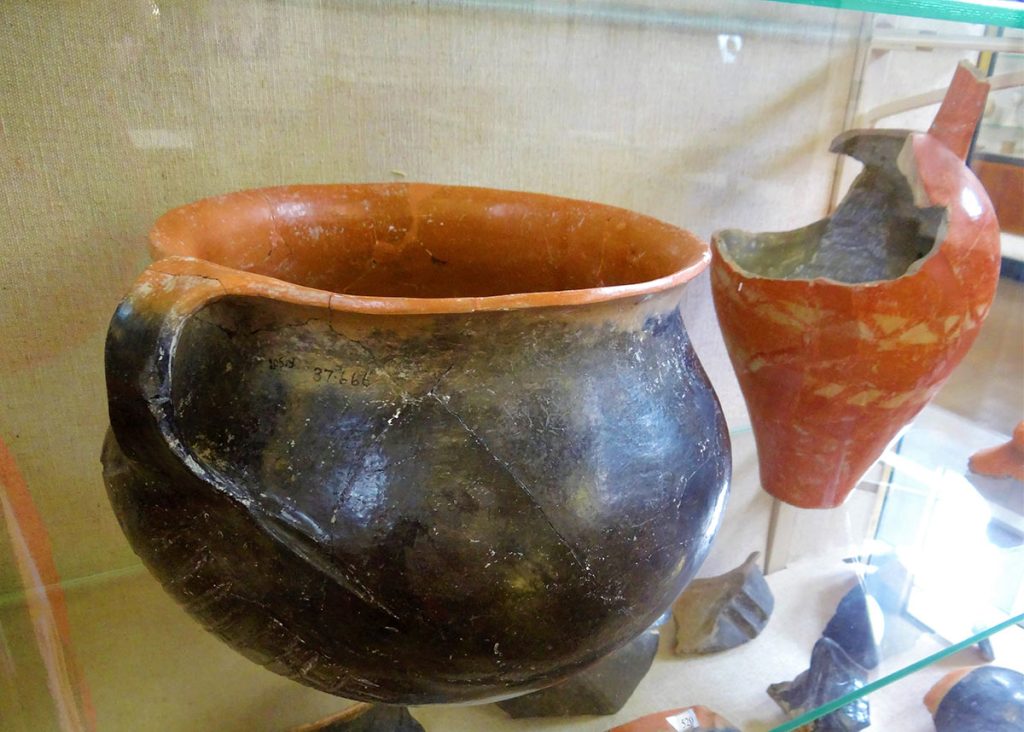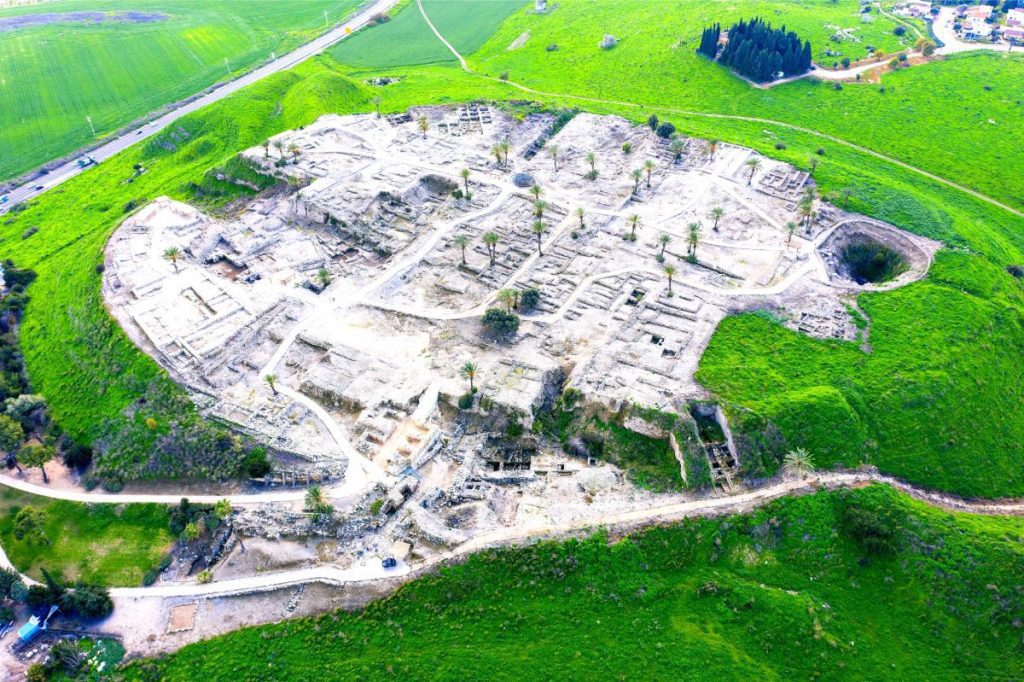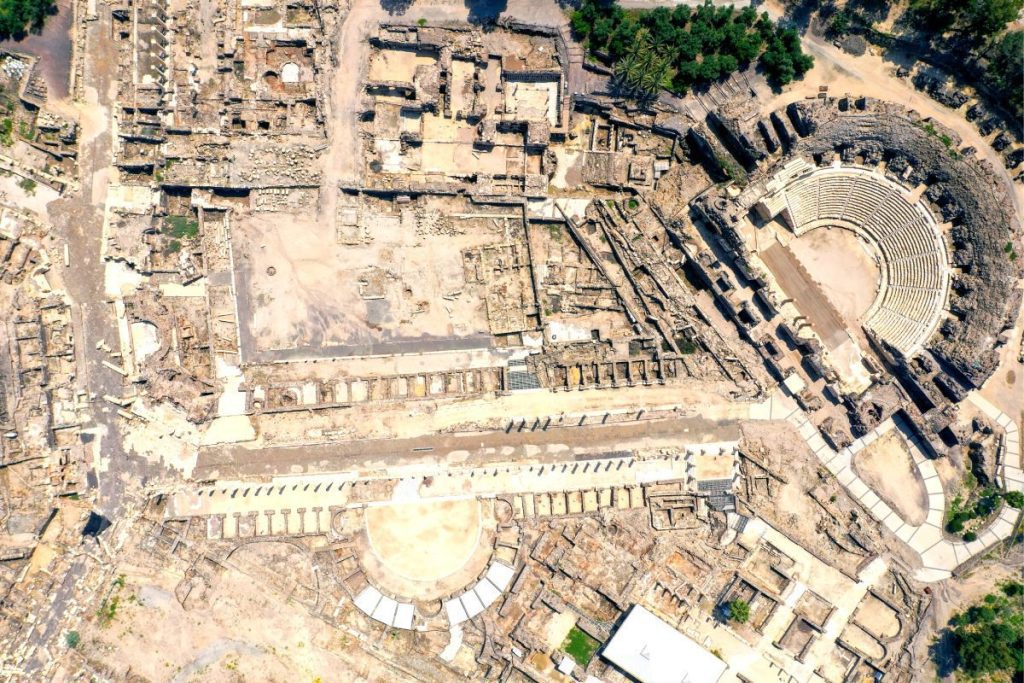Khirbet Kerak Ware (Khirbet Kerak Pottery) is a ceramic family of pottery vessels from the Early Bronze Age III (2300-2700 BCE). This Khirbet Kerak Ware is named after Tel Beth Yerah, a walled city from the Early Bronze Age that is located near the Sea of Galilee. In 1920, the potsherds were first discovered at this site. The potsherds are typical of the Mediterranean basin. Various models of tools from this family were found in Israel and Syria. Their main importance is in the diagnosis of the Early Bronze Age.

More About Khirbet Kerak Ware
“These pottery vessels take us to a completely different world from the world of Israeli ceramics of the Early Bronze Age that we have known so far,” wrote Archaeologist Ruth Amiran. The uniqueness of the Beit Yerach Pottery from local pottery indicates that it originated at a site outside the Land of Israel. However, their prevalence proves that they were not the result of trade; but of the wanderings of foreign nations into Canaan.
It is not known what the nature of the migration was, and the possibility of peaceful and non-mass infiltration can be considered if it is a group of trans-Caucasian nomads who brought one of the suspicious ancestors of the Moon House family, the well-represented Karaz or Pulur pottery. In the valleys of Kura and Orcs. Exploring the origin of the family has fascinated a number of archaeologists in previous decades, and has raised a number of major theses to the source of pottery. The first is the one mentioned above, trans-Caucasian pottery, and is highly accepted by most scholars.

Khirbet Kerak Ware First Discovered in the Holy Land
First discovered at Khirbet Kerak, on the southern shores of the Sea of Galilee. It was obviously made by potters who brought the tradition with them. Examples are of highly distinctive types, jugs, and jars, sometimes with fluting, painted and highly burnished red or black or a combination of these colors, andirons, some with decorations and faces, and carinated bowls. Khirbet Kerak ware was always handmade. Khirbet Kerak ware is also known as Red Black Burnished ware (sometimes hyphenated “Red-Black”) in west Syrian and Amuq Valley contexts.
In Transcaucasia – from which area it seems ultimately to have originated – the ware is also referred to as Karaz or Pulur ware. As such, it may be associated with the later historic appearance of the people recognized historically as the Hurrians. Petrographic analyses show some of it was made locally. Other local traditions continue and eventually influenced the pottery of the Intermediate Age, which followed.
Khirbet Kerak Ware Has Proximity to Anatolian Culture
Amiran noticed the proximity of the types of materials used by an Anatolian culture to the Khirbet-Keark Pottery, and moreover, the excavations in the Amuq Valley, located in southern Turkey, near the Syrian border and close to the Mediterranean Sea, gave pottery examples of the red and black polished vessels. ‘(Red Black Burnished Ware) Incredibly similar to the Khirbet Kerak Ware.
Amiran claimed that both the Anatolian “copper culture” and the culture that brought the Khirbet Kerak Ware to Israel were linked by a common ancestor, the Caucasian culture. It is also possible that the culture that migrated to Canaan came from Anatolia. Another way for identification is given by Amiran, this is the Firing of the pottery. The unique firing that characterizes the family can be found in two other families: the Black Topped pottery, B-type Pottery, and Cypriot pottery, which is probably somewhat related to the Khirbet Kerak Ware.

The Spread of Khirbet Kerak Ware
Khirbet Kerak Ware has been found at many sites around the country with the main fabrication areas being at Hazor, Beth Yerah, Beit Shean, to which the Trans-Caucasian nomads migrated. All types of utensils and utensils were also discovered at these sites, indicating a population with a foreign culture and lifestyle. In the vicinity of these sites, which the French archaeologist, Pierre de Miroschedji called “nuclear sites”, there are other sites, where the presence of tools indicates the possibility of trade with nearby nuclear sites or the internal migration of artisans who created the tools on the site.
These sites, known as “peripheral sites”, include Megiddo, Yokneam, Jezreel, and other sites in the Jordan Valley, the Jezreel Valley, and the Galilee. In addition to these sites, tools from Khirbet Kerak Ware, were discovered at several sites in the center and south of the country, which according to a petrographic study proved to originate in the nuclear sites in the north, and hence there was trade in these tools, and they were considered a luxury item.

